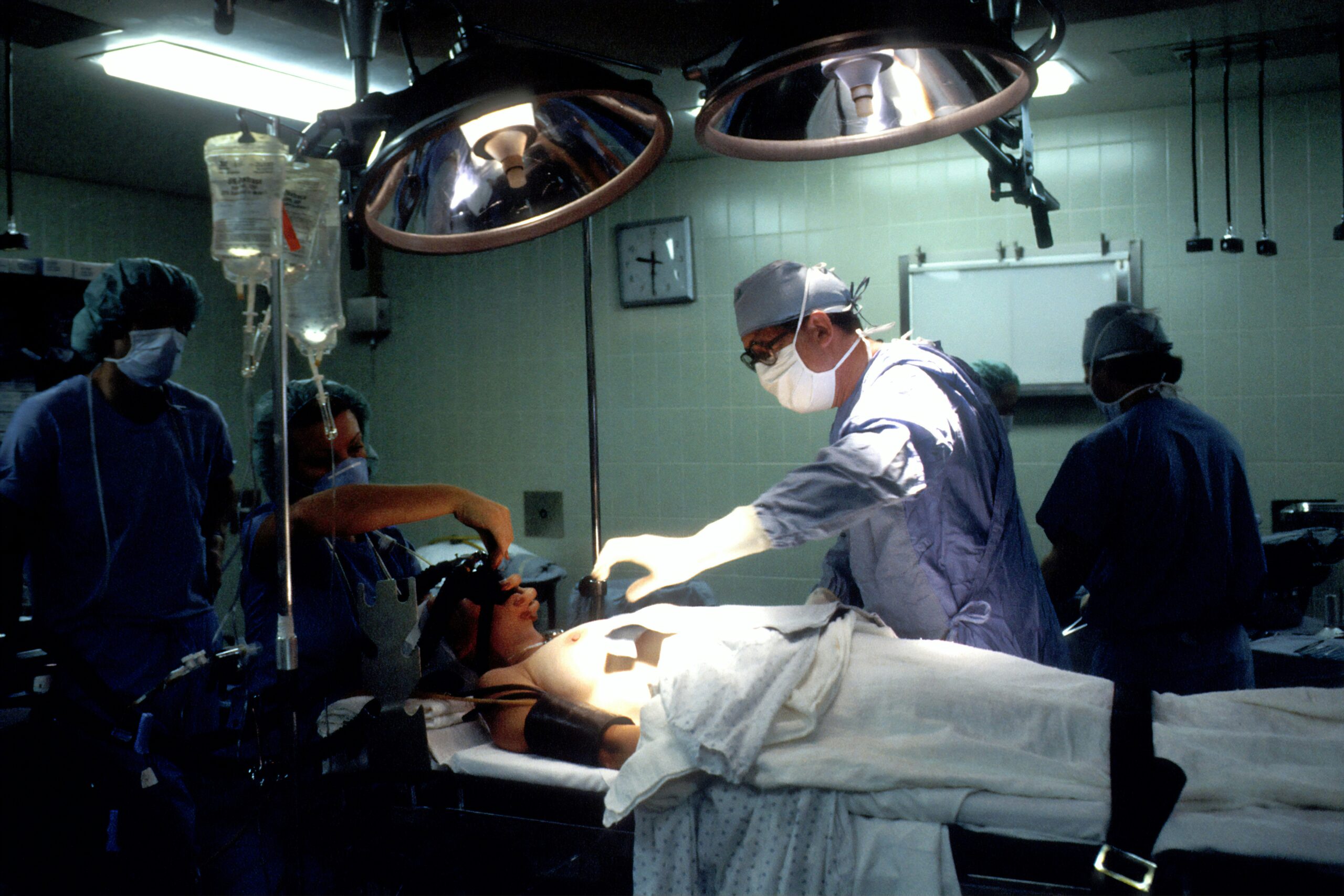Did you know that the prostate gland, a small but crucial part of the male reproductive system, has a designated region in the body where it is housed? Understanding the location of the prostate gland is essential for identifying any potential health issues or concerns. In this article, we will explore the region of the body where the prostate gland is located, shedding light on its significance and the importance of maintaining its well-being. So, let's embark on this informative journey and discover the answer to the question: which region of the body houses the prostate gland?

Understanding the Prostate Gland
The prostate gland is an essential part of the male reproductive system. It plays a crucial role in the production of seminal fluid and has implications for urinary and sexual function. To fully grasp the importance of the prostate gland and its impact on overall health, it is necessary to define its structure and function.
Defining the prostate gland
The prostate gland is a small, walnut-sized gland located between the bladder and the base of the penis. It surrounds the urethra, which is the tube responsible for carrying urine and semen out of the body. The prostate gland consists of both muscular and glandular tissues, and its primary function is to produce and secrete a fluid component of semen.
The role and function of the prostate gland
The prostate gland plays a vital role in reproduction. Its main function is to produce and store seminal fluid, which is essential for nourishing and transporting sperm. During ejaculation, the muscles of the prostate gland contract to push the seminal fluid into the urethra, where it combines with sperm from the testicles to form semen. This process enables the sperm to travel through the reproductive system and fertilize an egg.
Location of the Prostate Gland
To better understand the prostate gland, it is important to know its exact location within the male body.
The prostate gland is located in the male reproductive system
The prostate gland is positioned within the male reproductive system. It is situated just below the bladder and in front of the rectum. This placement allows for its interaction with both the urinary and digestive systems.
Specific position of the prostate gland in the pelvis
More specifically, the prostate gland is located deep within the pelvis, between the pubic bone and the rectum. Its position in the pelvis allows it to have direct contact with the bladder and the urethra, as well as easy access for medical examinations and procedures.
Relation of the Prostate Gland to the Bladder
The proximity of the prostate gland to the bladder has important implications for urinary function and health.
Proximity to the urinary bladder
The prostate gland is positioned just below the bladder, which means it is in close proximity to this essential urinary organ. This physical relationship allows for the interaction between the two structures, influencing the flow of urine from the bladder through the urethra.
How the prostate gland and bladder interact
When the bladder fills with urine, the prostate gland plays a crucial role in preventing the backflow of urine into the urethra. The muscular and glandular tissues of the prostate work together to create a closure mechanism, stopping urine from entering the urethra prematurely. This interaction ensures proper urinary function and helps maintain continence.
Relation of the Prostate Gland to the Urethra
The position of the prostate gland in relation to the urethra has significant implications for urinary and reproductive functions.
Positioning in relation to the urethra
The prostate gland surrounds the urethra, encircling it like a donut. This anatomical arrangement allows the prostate to exert control over the flow of urine and semen passing through the urethra. The presence of the prostate gland can influence both the volume and force of urinary flow.
Impact of the prostate on urethral function
As urine flows through the urethra, it must pass through the prostate gland. The prostate's muscular tissues can contract or relax, affecting the diameter of the urethral opening. This dynamic control enables the prostate gland to regulate the flow of urine and semen, ensuring the smooth passage of fluids and contributing to overall urinary and reproductive function.

Relation of the Prostate Gland to the Rectum
The close proximity of the prostate gland to the rectum has implications for both medical examinations and potential health concerns.
Close proximity to the rectum
The prostate gland is situated just in front of the rectum. This proximity allows for a relatively easy physical examination of the prostate through the rectal wall. It also means that certain medical conditions affecting the prostate, such as prostate cancer, can potentially be detected through rectal palpation or imaging.
Implication of this proximity for medical exams
The close proximity of the prostate to the rectum enables healthcare professionals to perform a digital rectal exam (DRE) as part of routine prostate checks. During a DRE, a gloved and lubricated finger is inserted into the rectum to feel the prostate gland for any abnormalities, such as lumps or enlargement. This examination, although unconventional, is an important tool for the early detection of prostate-related issues.
Features of the Prostate Gland
Understanding the size, shape, and composition of the prostate gland can provide further insight into its role and function.
Size and shape of the prostate gland
The size and shape of the prostate gland can vary among individuals and can change with age. On average, the prostate gland is roughly the size of a walnut, though it tends to enlarge with age. Its shape is often described as resembling a cone or inverted pyramid.
Compositional elements: muscular and glandular tissues
The prostate gland is composed of both muscular and glandular tissues. The muscular tissues provide the necessary contractions for ejaculation and maintain the closure of the urethra during bladder filling. The glandular tissues produce and secrete the fluid component of semen, which nourishes and supports the sperm during reproduction.

Role of the Prostate Gland in Reproduction
The prostate gland plays a critical role in the reproductive process, contributing to fertility and the overall function of the male reproductive system.
Production of seminal fluid
One of the primary functions of the prostate gland is the production of seminal fluid. Seminal fluid consists of secretions from the prostate gland, as well as contributions from other reproductive organs. This fluid provides essential nourishment and protection for sperm, aiding in their ability to fertilize an egg.
Role in ejaculation
During sexual arousal and ejaculation, the prostate gland contracts to release the stored seminal fluid into the urethra. This fluid, combined with sperm from the testicles, forms semen. The contractions of the prostate gland propel the semen out of the body through the urethra, enabling the potential for fertilization.
Common Prostate Gland Problems
While the prostate gland has important functions, it is also vulnerable to certain health conditions that can cause problems.
Prostatitis
Prostatitis refers to inflammation of the prostate gland, often caused by a bacterial infection. This condition can cause urinary symptoms such as increased frequency, urgency, and pain or discomfort during urination. Treatment typically involves antibiotics and anti-inflammatory medications.
Benign prostatic hyperplasia (BPH)
Benign prostatic hyperplasia, also known as an enlarged prostate, is a common condition that affects many men as they age. It refers to the noncancerous enlargement of the prostate gland, causing urinary symptoms such as weak urine flow, frequent urination, and the need to urinate at night. Various treatment options are available, including medication, minimally invasive procedures, and surgery.
Prostate cancer
Prostate cancer is the most common cancer among men, typically developing in the cells of the prostate gland. It can cause a range of symptoms, including urinary problems, sexual dysfunction, and pain in the pelvic area. Early detection through PSA testing and regular medical check-ups is crucial for effective treatment and improved outcomes.

Signs and Symptoms of Prostate Gland Issues
Being aware of the signs and symptoms associated with prostate gland issues can help with early detection and prompt medical intervention.
Urinary symptoms
Problems with the prostate gland can lead to various urinary symptoms, including changes in frequency, urgency, weak urine flow, difficulty initiating or stopping urination, and the need to urinate frequently at night. These symptoms can be indicative of conditions such as prostatitis, BPH, or prostate cancer.
Sexual dysfunction
Prostate gland issues can also affect sexual function, leading to symptoms such as erectile dysfunction (difficulty achieving or maintaining an erection), reduced libido, and ejaculation problems. These symptoms may arise from conditions like an enlarged prostate or prostate cancer.
Pain and discomfort
In some cases, prostate gland issues can cause pain and discomfort in the pelvic area, lower back, or during urination or ejaculation. These sensations may be indicative of prostatitis, an enlarged prostate, or prostate cancer. It is important to consult with a healthcare professional if experiencing persistent or concerning pain.
Prostate Gland Check-ups and Medical Examinations
Regular check-ups and medical examinations are crucial for maintaining prostate health and detecting potential issues.
Digital rectal exam (DRE)
A digital rectal exam (DRE) is a common medical examination used to assess the prostate gland's size, shape, and texture. During a DRE, a healthcare professional inserts a gloved and lubricated finger into the rectum, allowing them to feel the prostate gland for any abnormalities. This examination is an important part of routine prostate checks and can help detect potential issues early.
Prostate-specific antigen (PSA) test
The prostate-specific antigen (PSA) test is a blood test that measures the level of PSA, a protein produced by the prostate gland. Elevated PSA levels can indicate potential issues with the prostate, including infection, inflammation, enlargement, or even prostate cancer. This test, combined with other clinical evaluations, helps healthcare professionals assess prostate health and potential risks.
Biopsy for diagnosis
If there are suspicions of prostate cancer based on abnormal digital rectal exam findings or elevated PSA levels, a prostate biopsy may be recommended. This procedure involves the removal of small tissue samples from the prostate gland for examination under a microscope. Biopsies provide a definitive diagnosis and help determine appropriate treatment options.
In conclusion, understanding the prostate gland's location, its relation to surrounding structures, its features, functions, and potential health issues is essential for overall well-being. Regular check-ups and early detection of any prostate gland problems can greatly impact treatment outcomes. By being knowledgeable about the prostate gland, you can take a proactive approach to your health and maintain optimal prostate function.


